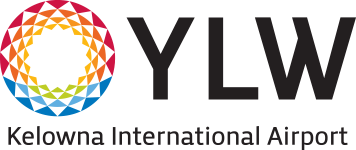Aircraft Flight Approaches
Kelowna International Airport is a hub airport for the Okanagan. Due to the mountainous and valley terrain in which YLW is situated, operating in inclement weather which impacts visibility such as snow, rain and fog can sometimes be challenging for air operators. If the required visibility isn't available, aircraft may sometimes circle in the air until visibility improves, or even divert to other airports. We worked with NAV CANADA to introduce an additional Required Navigation Performance Authorization Required (RNP-AR) approach in March 2024, which provided an additional route for aircraft arriving into YLW during various weather conditions to help minimize delays and diversion of aircraft.
Information sessions were held in 2023 for residents to learn about this additional RNP-AR approach and speak with YLW and NAV CANADA staff.
If you were unable to attend, please review the below information.
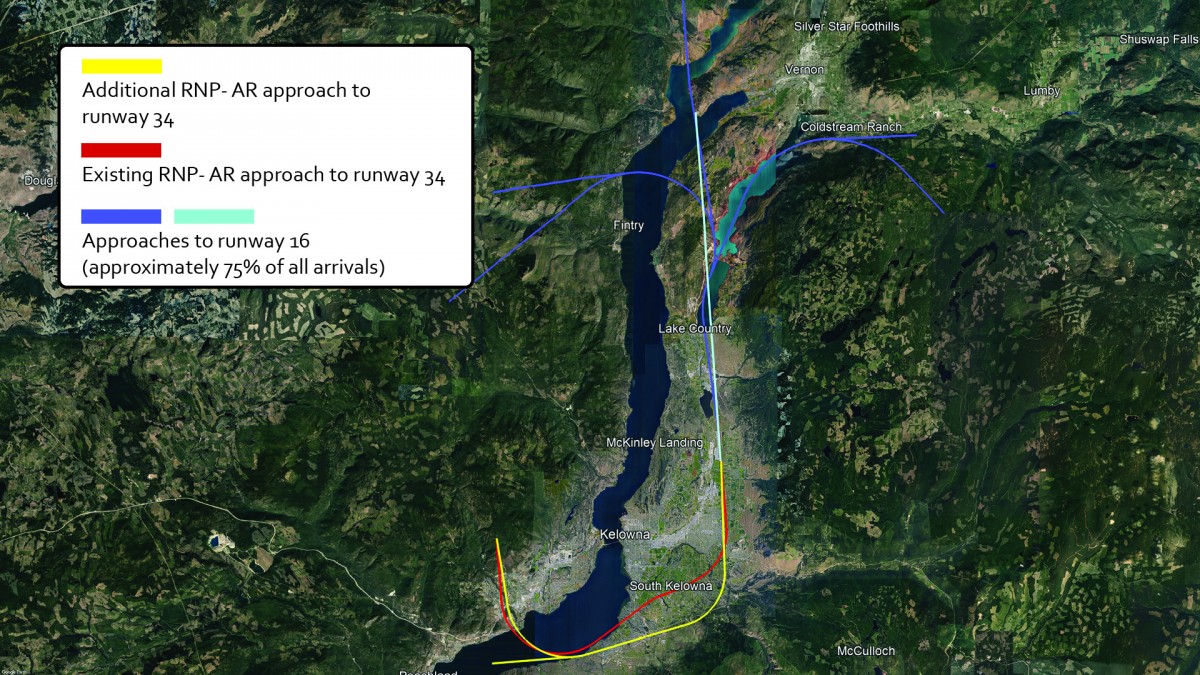
RNP-AR approach allows pilots to fly more precise and efficient routes, reducing the risk of delays or cancellations due to inclement weather, and provides more accurate guidance and navigation for pilots, especially in the mountainous areas around YLW. This will result in more travellers getting to and from their destinations as planned.
Residents may notice some aircraft operating in slightly different locations than previous once this approach is available. Residents of Upper and Southwest Mission, Crawford Estates and Southeast Kelowna will see more aircraft directly overhead.
RNP-AR is designed to provide aircraft with shorter, more direct routes on approach and is supported by a new International Civil Aviation Organization (ICAO) separation standard. This allows an aircraft’s flight management system and satellite positioning to fly a precise three-dimensional path, which is safe, efficient, and predictable. This benefits not only the pilots and airlines, but NAV CANADA staff, who are able to maintain a safe and predictable operation at YLW more effectively.
This technology, which is in use at 32 airports nationally (and already in use at YLW), is shown to reduce emissions based on quieter continuous descent operations. In 2020, it is estimated that Canada wide these procedures resulted in GHG savings of approximately 4.2+ million kg , over 300,000 miles of flying, and 1.6+ million litres of fuel, when compared to conventional approaches.
This type of approach falls under the classification of a Continuous Descent Operation – which allows aircraft to descend on a low thrust setting and in a quieter profile. These are proven to result in noise reductions of 1 to 5 dB(A) in addition to reducing emissions.
Required Navigation Performance Authorization Required (RNP-AR) is a form of aircraft navigation using an aircraft’s flight management system and satellite positioning to fly a precise three-dimensional path in the sky. RNP-AR approaches provide safe, efficient and predictable routes for aircraft and are especially useful at airports like YLW that have a mountainous terrain. In addition, implementing RNP-AR in Canada is part of Canada’s Action Plan to Reduce Greenhouse Gas Emissions from Aviation.
During certain weather conditions, such as strong winds, aircraft are unable to land on runway 16, which is the preferred runway due to pilot sightlines and terrain conditions. Runway 16 is used for 75% of all activity at YLW. When this happens, aircraft must land on runway 34, which they are not always able to do in low visibility conditions. The addition of a second and modified RNP-AR approach on runway 34 will allow a wider variety of aircraft to arrive more frequently in low visibility conditions from the south.
We are now working with NAV CANADA to introduce an additional RNP-AR approach for aircraft arriving from the south on runway 34. This additional RNP-AR approach will allow for increased reliability for aircraft arriving to YLW that otherwise would be delayed or cancelled due to weather conditions, by allowing pilots to fly more precise and efficient routes.
Image – Visual Flight Rules (VFR) conditions– aircraft can use multiple routes to access YLW
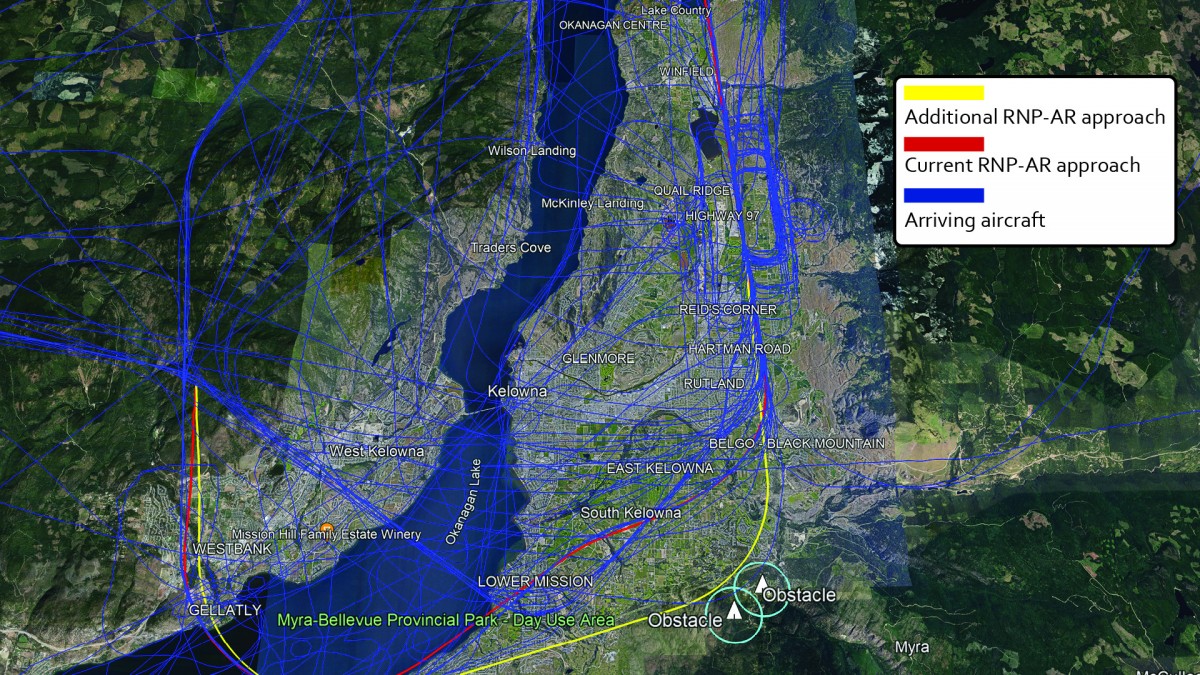
Image – Instrument Flight Rules (IFR) conditions – aircraft need to use instrument technology and RNP-AR approaches to access runway 34 at YLW
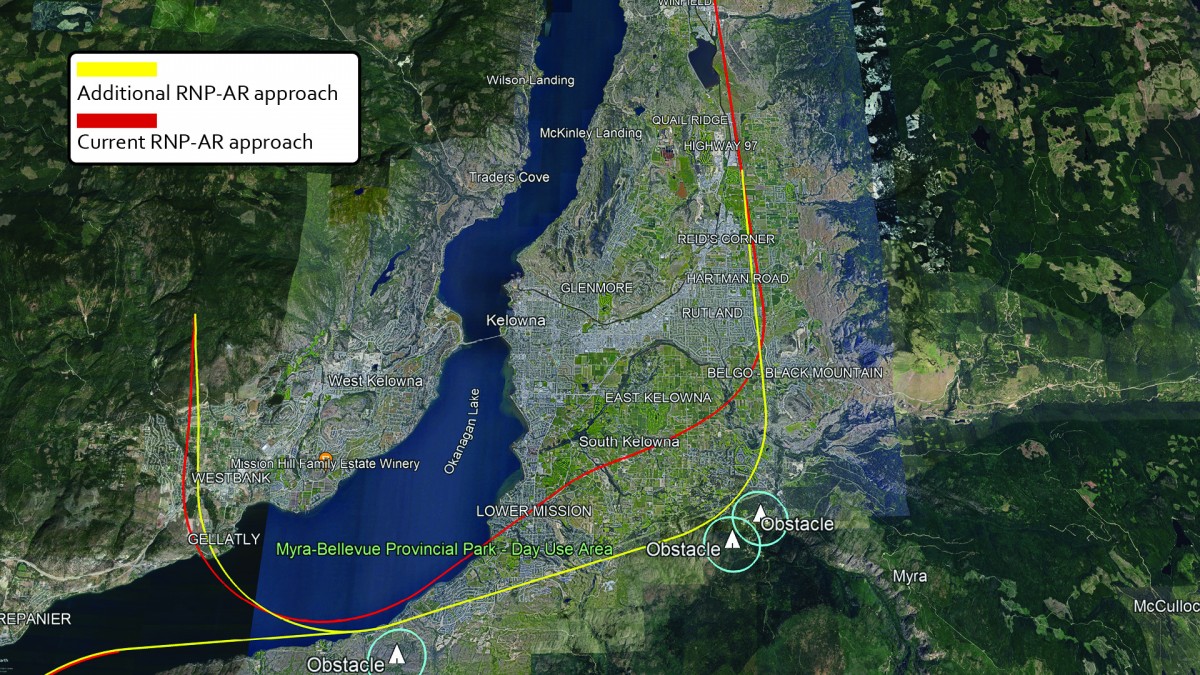
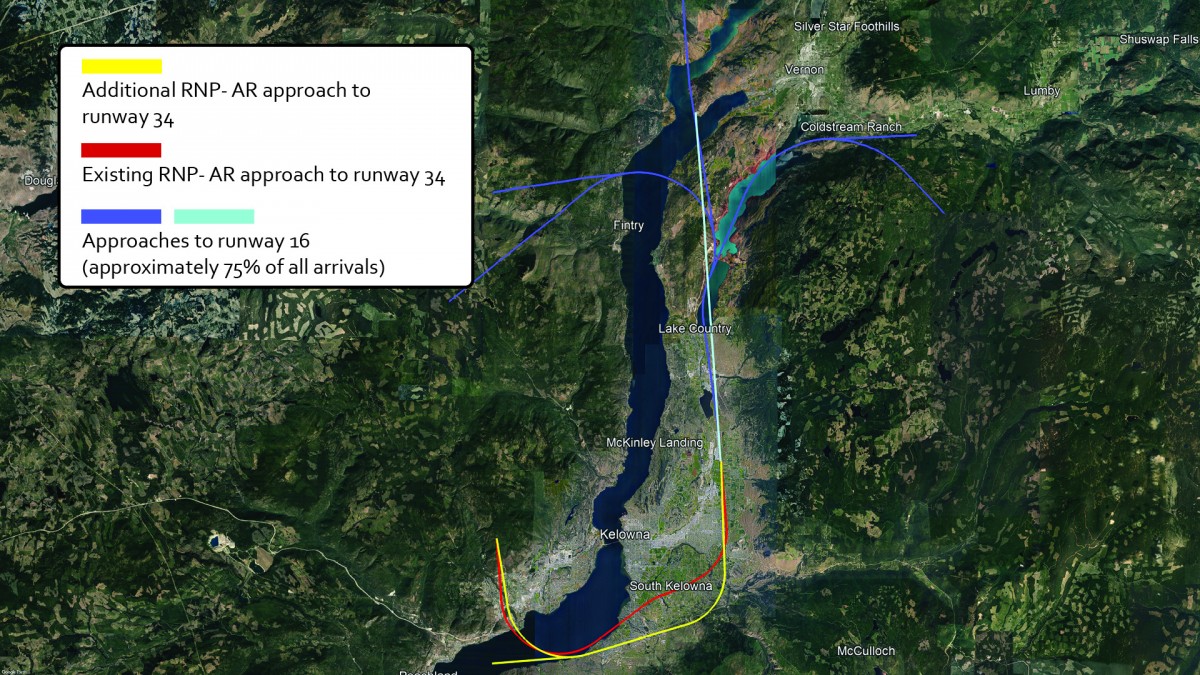
- 1996: RNP-AR technology introduced to provide precision aircraft navigation through mountainous terrain using satellite technology
- 2005: WestJet, in coordination with YLW, developed their own RNP-AR approaches
- 2014-2015: New public RNP -AR approaches for north arrivals
- 2016: New public RNP-AR approaches available for use by any air carrier with the required equipment and training
- 2024: Additional public RNP-AR approaches for south arrivals
Transport Canada’s Climate Action Plan: Canada's Aviation Climate Action Plan, 2022-2030
